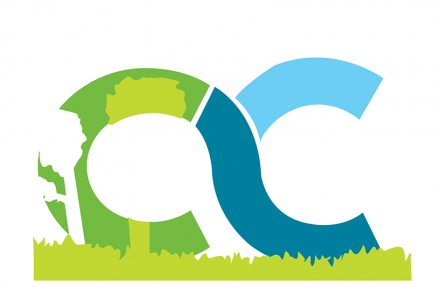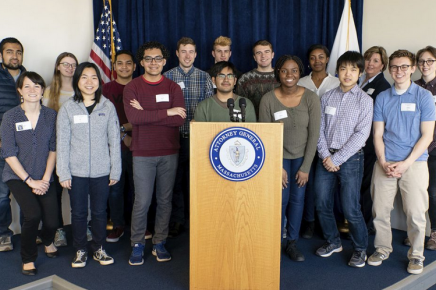MITOS and the MIT Office of Emergency Management collaborated with the Cambridge Compact for a Sustainable Future to host a Climate Resiliency Tabletop Exercise . The event engaged Cambridge businesses, the cCity and institutions in identifying business continuity and coordination challenges and opportunities following a climate-based incident that causes business and research interruptions.
Climate Resiliency Research
"Leveraging Local Learning about Global Climate Change"
Ongoing research is an essential part of supporting a climate resilient MIT. This is accomplished through partnership with researchers and faculty as well as students. This work with students provides valuable insight and experience and supports one goal of MIT’s Fast Forward climate action plan which is to provide in-depth climate research experiences to our students.
MITOS student researchers along with collaborations with undergraduate and graduate students in resiliency analysis, modeling, and communication, deepen each student’s education, advance the state of research, and provide educational material for the campus. MITOS staff and Faculty Fellow Ken Strzepek helps to coordinate climate resiliency research activities.
Some of the student projects coordinated by MITOS include:
-
Building the MIT Climate Resiliency Dashboard - Visually communicating climate risks to the MIT campus helps the community understand projected flood risks for campus locations, grounded in the science-based MIT/City of Cambridge flood risk model. This MIT dashboard was built by a multi-stakeholder collaboration led by graduate student fellows from the Department of Urban Studies and Planning, MITOS Faculty Fellow Ken Strzepek, and staff from the Department of Facilities.
-
Modeling campus basement porosity - Understanding basement flood risk probability and peak water depth are key data points for determining risks to the continuity of MIT research and operations. In partnership with the Urban Risk Lab (and supported by a web app created by research scientists Aditya Barve and Mayank Ojha ), MITOS convened 15 students in a week-long “Porosity Hunt” to model exterior openings in campus basements that could enable flood water penetration. PhD student Katarina Boukin is integrating these findings into her PhD exploring modeling techniques for predicting flood risk on the MIT campus.
-
Urban heat island studies using MIT campus - Increasing heat risk requires understanding of how the current campus landscape experiences summer extreme heat. In partnership with the Department of Civil and Environmental Engineering, graduate student Lauren student is designing, building, deploying, and monitoring heat indicators at different outdoor campus locations.
-
Projecting future climate change impacts - Updating climate change projections for the MIT campus, based on evolving global circulation models, is important for understanding and planning for the dynamics of a changing climate. This study was carried out by MIT undergraduate Piero Oderique through the experiential learning opportunity (MIT ELO) fellowship program.
-
Understanding campus climate impacts - Quantifying the impacts of potential climate risk to the campus community, buildings, utilities and site is enabling MIT to prioritize climate resiliency actions. Student Fellow Diego Castillo Peredo led this study in partnership with graduate students from the MIT Department of Urban Studies and Department of Civil and Environmental Engineering as well as staff from MIT campus operational, insurance, risk, engineering and capital renewal planning.
Resiliency Stress Test
The Resiliency Stress Test has been conducted for campus in partnership with experts from climate science and operations to evaluate a sample of campus to: 1) Identify the range of potential impacts from climate events and 2) Explore potential solutions that can reduce climate risks to campus.
Step 1: The building, infrastructure, and site systems sub-groups are each describing potential impacts to their respective systems from the same scenarios for both an extreme rain and an extreme heat event. Once these impacts are described and synthesized from the building, infrastructure, and site systems sub-groups, the community systems sub-group will then identify ways that the impacts affect the MIT community.
Step 2: This baseline understanding of impacts identified (Step 1) will enable each sub-group to explore strategies for reducing the risks of climate impacts. By understanding potential risk reduction strategies for a small scale portion of campus, MIT can become familiar with the breadth and depth of technical, financial, and social adaptations required for campus-wide resiliency.
Early findings from Step 1 show that there is considerable interdependency among building, infrastructure, and site systems such that a failure in one system can cause a failure in other systems. This recognition is requiring extensive collaboration among the sub-groups as they describe both the impacts as well as potential solutions.
Growing a resilient MIT requires a community-wide understanding of climate risks and adaptation opportunities. Collaboration with key partners has furthered our education and awareness-raising.
PKG Spring Break matches teams of MIT students with community organizations where students learn firsthand about complex social issues impacting communities and the work that is being done to address those challenges. Student leaders facilitate this experience for their assigned cohort, and utilize the support of staff mentors to create a fun, community-embedded, and thought-provoking experience.
MIT partnered with the City of Cambridge to present the joint case of campus/city climate resiliency planning at the Forging University-Municipality Partnerships Toward Urban Sustainability Conference. The goal of the conference was to inspire progress by sharing successful examples of university-municipality collaboration on sustainability efforts.





